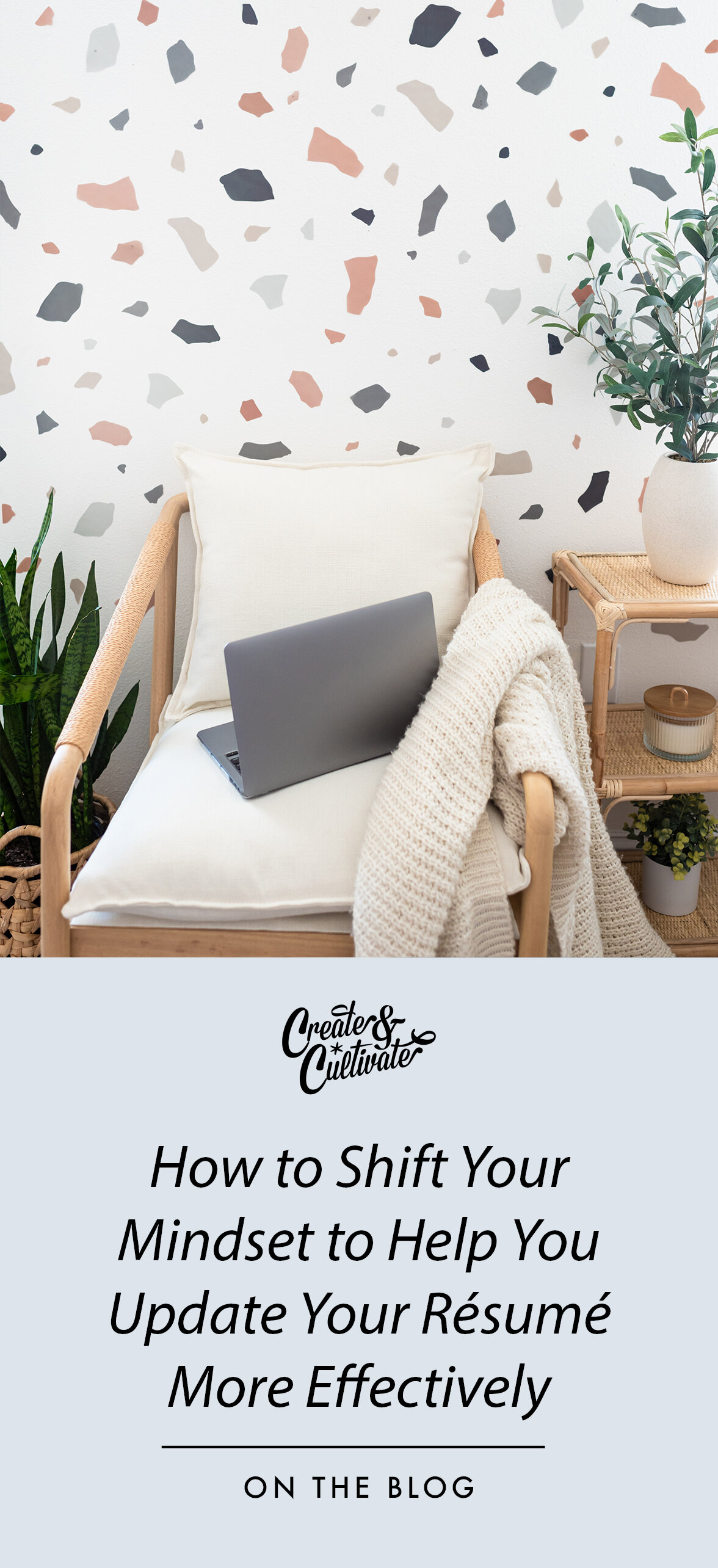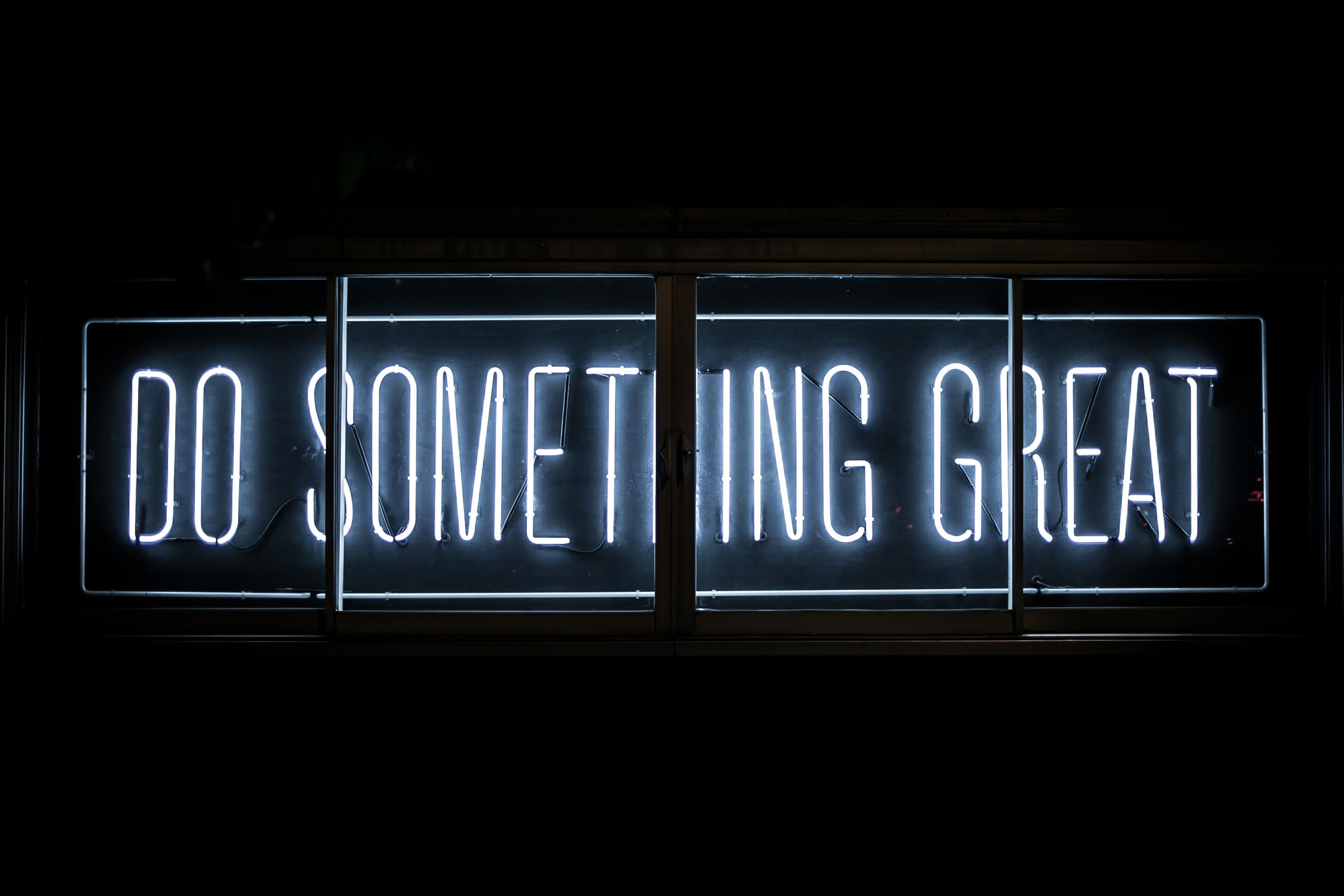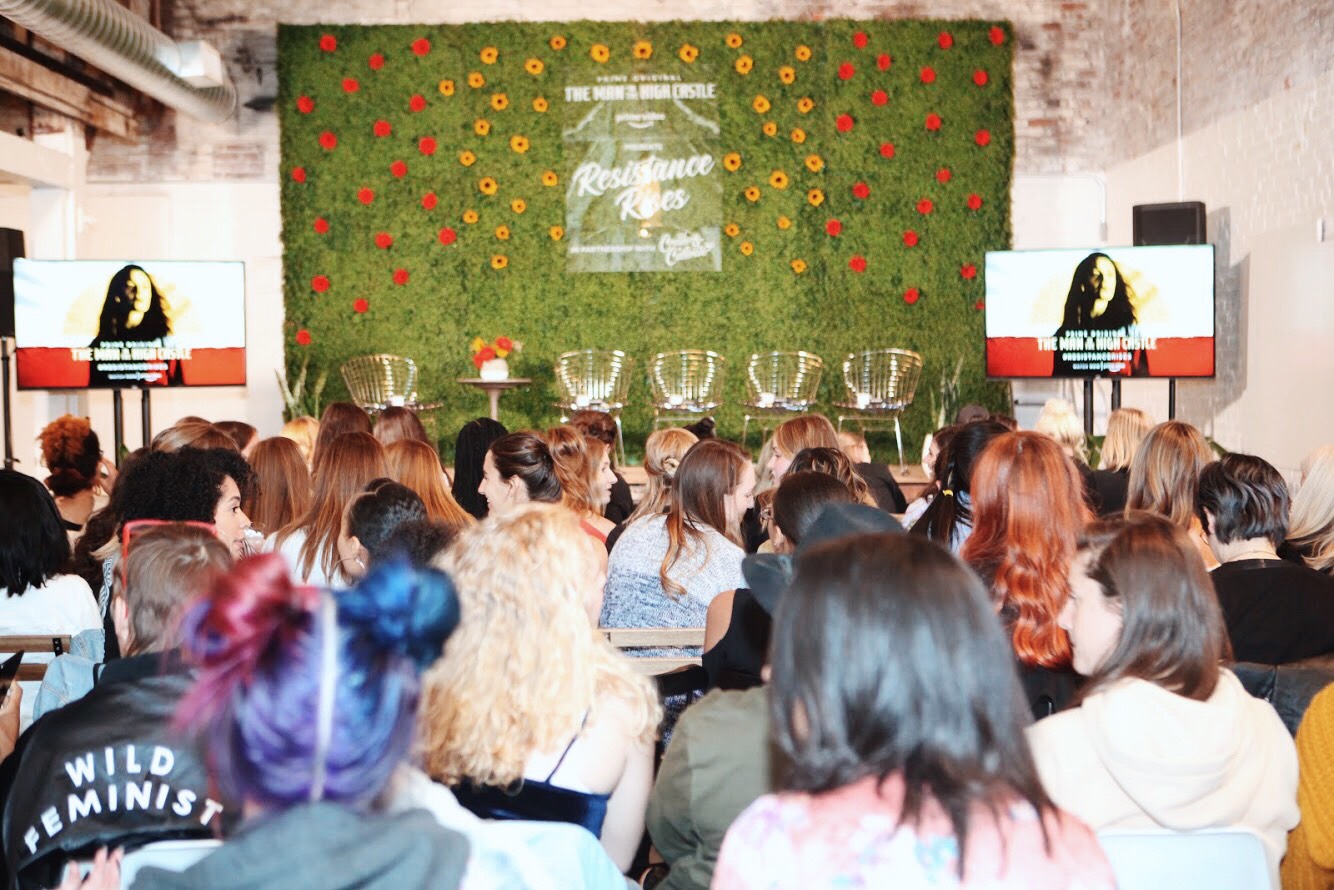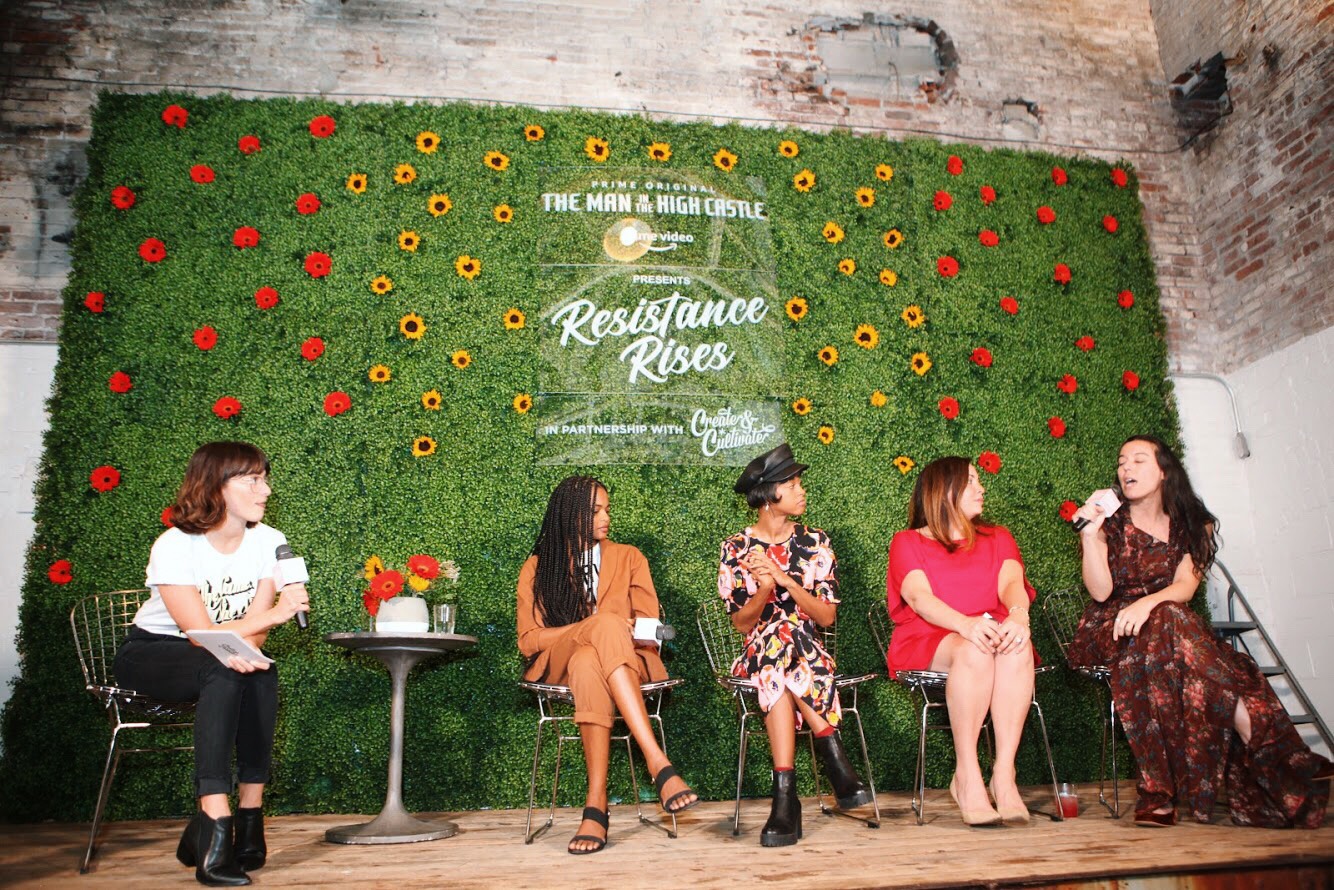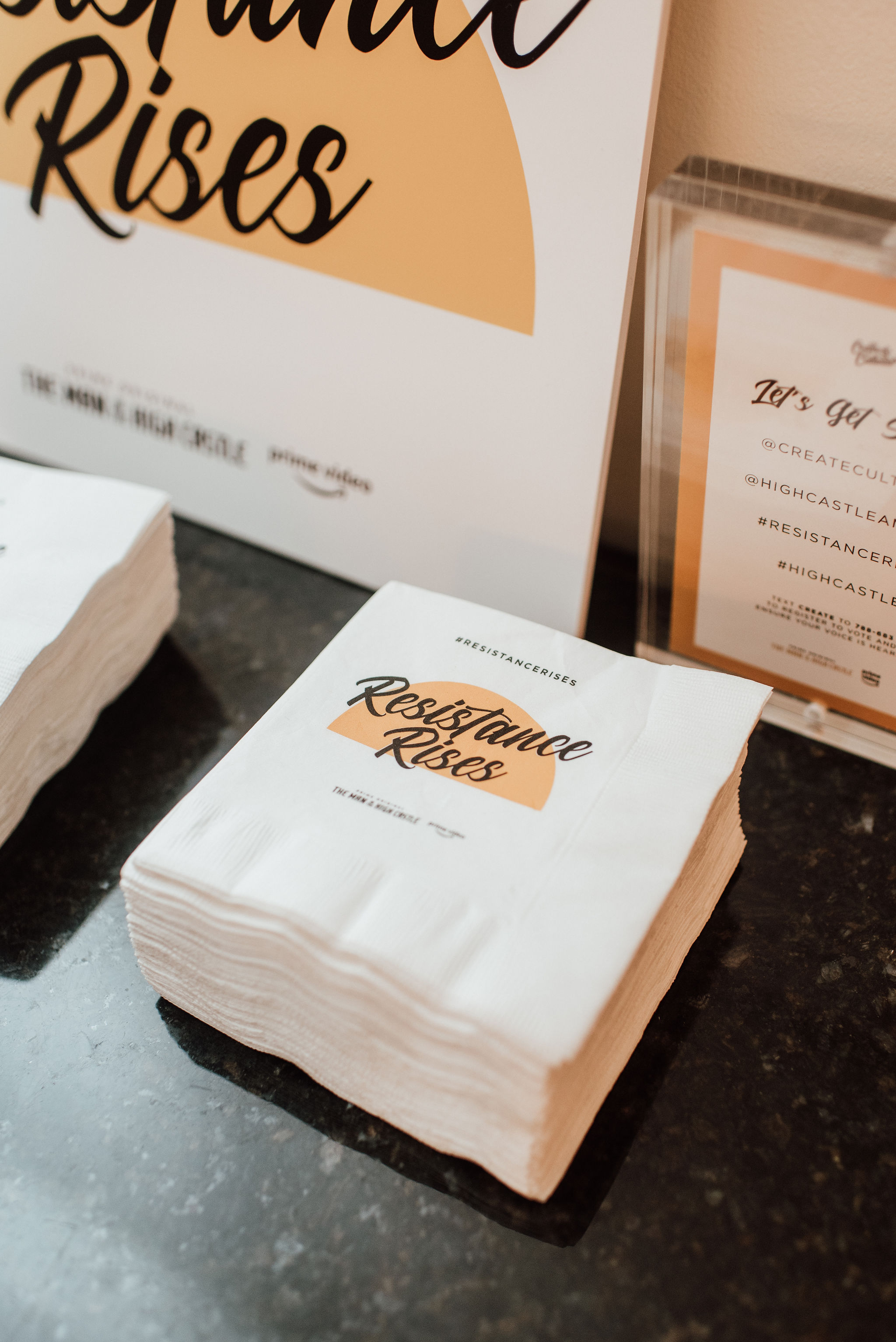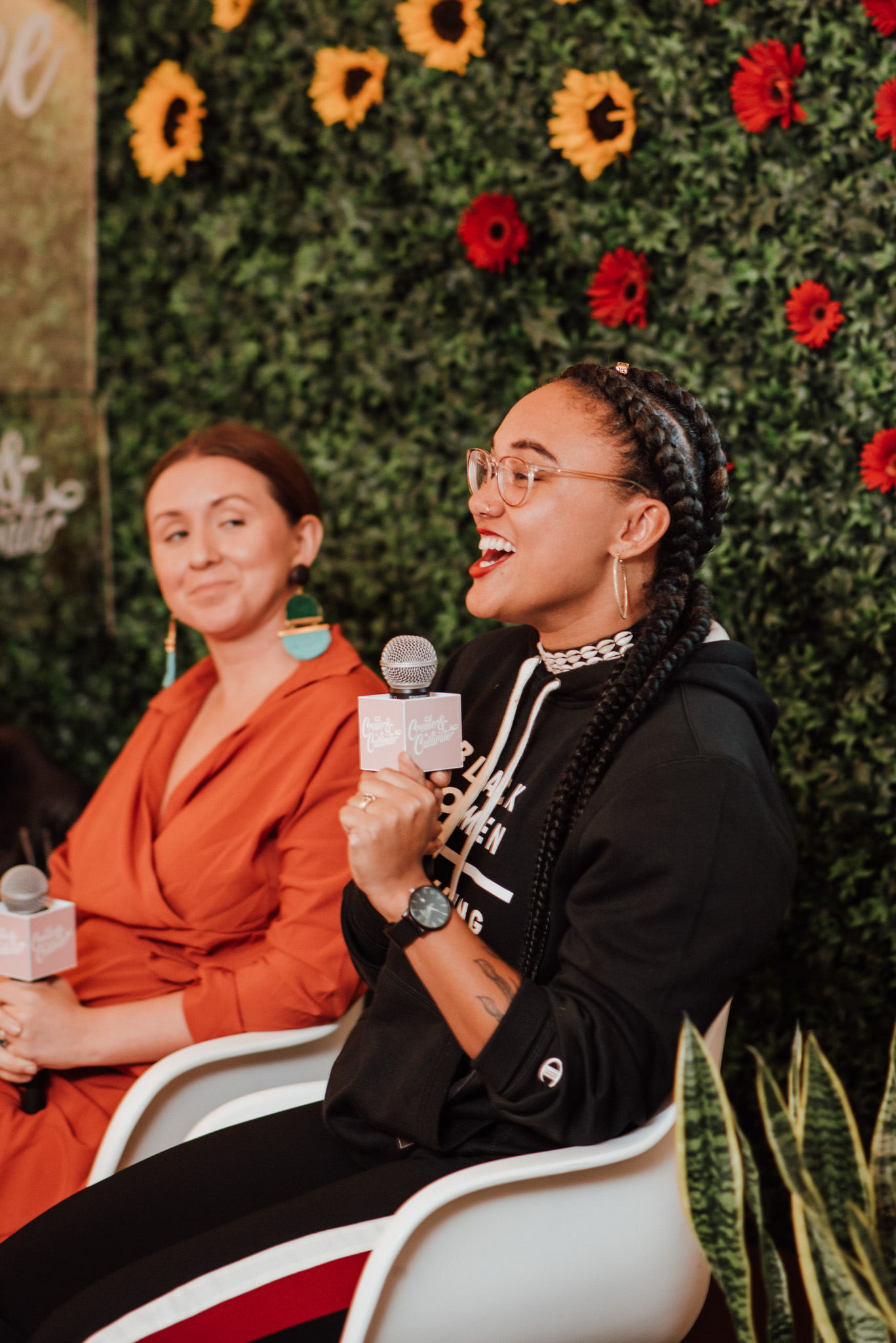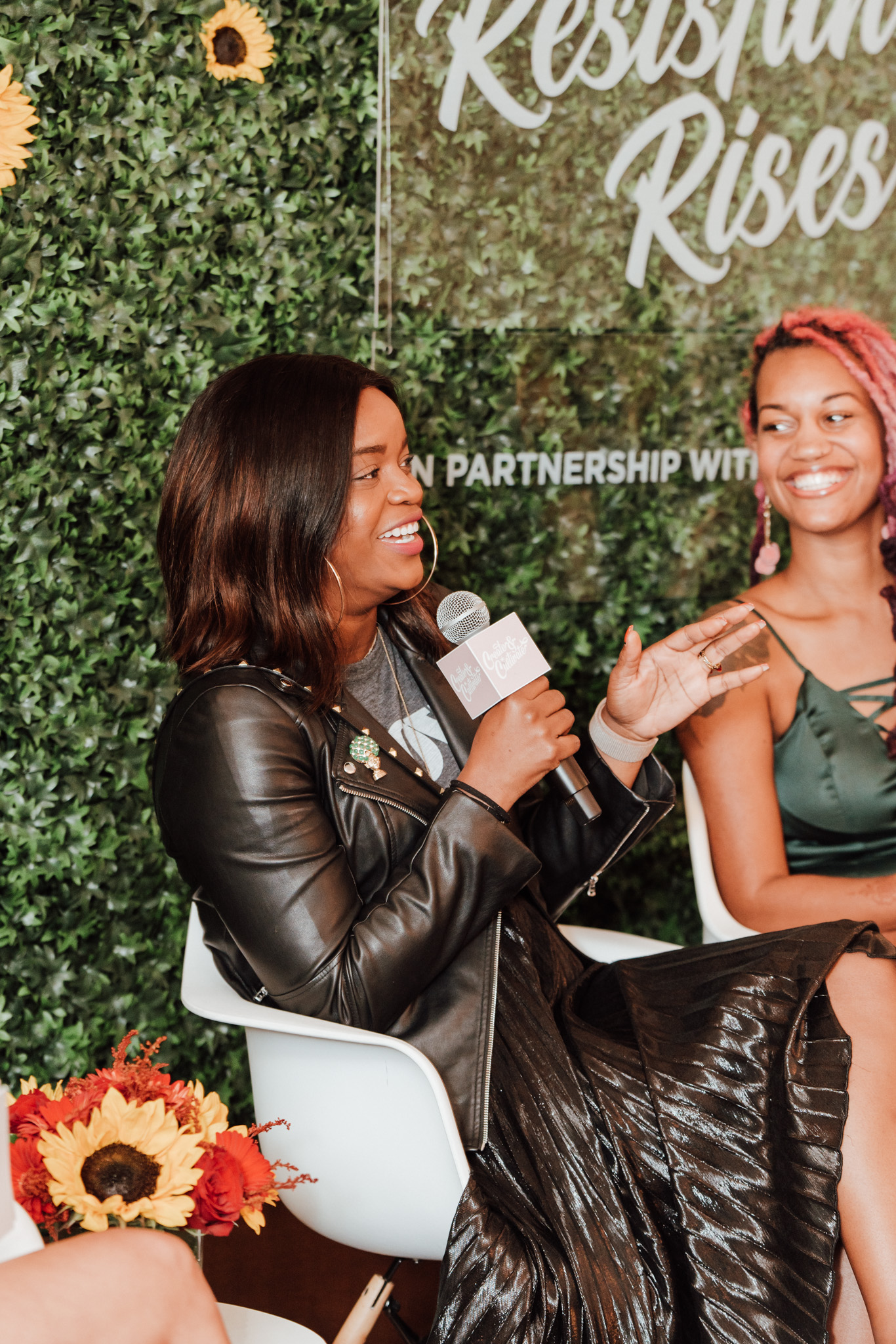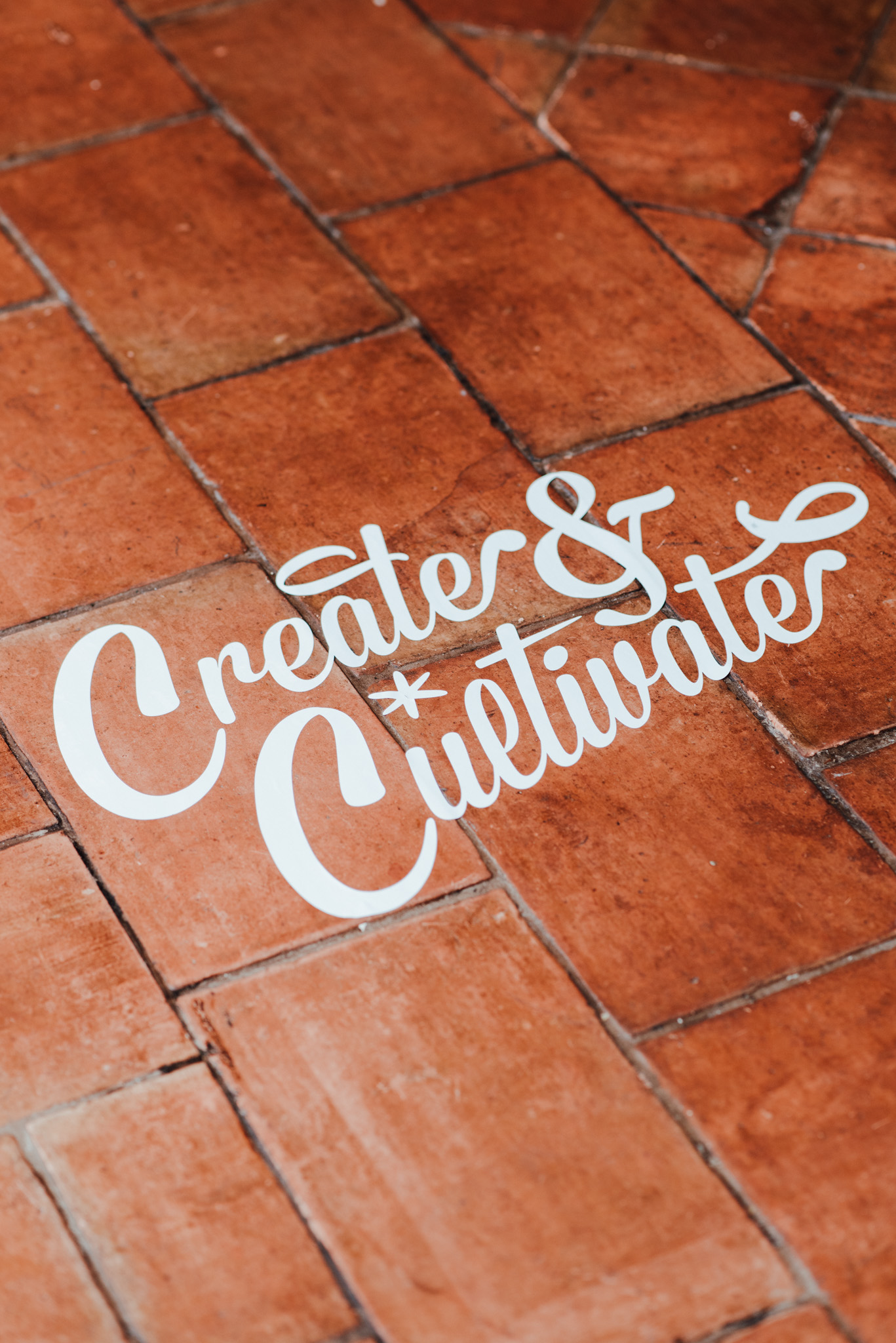4 Organization Hacks to Help You Take Control of Your Life
We call it self-care.
Photo: Teona Swift from Pexels
When your home is cluttered and chaotic, it can be difficult to muster up the energy needed to tackle even the smallest of chores. The worse it gets, the harder it is to find both the time and strength to put things right. But all that disorder is actually doing you harm.
Research has shown that living and working in a clean, orderly environment is beneficial to both mental and physical health. Well-organized spaces lower stress levels, increase motivation, improve sleep, and even encourage healthier decision-making.
Organizing and cleaning a cluttered house may seem like a colossal task, but if you break it into smaller pieces, you’ll be amazed at what you can achieve. Here are four small(ish) organization hacks and decluttering tips to help you get started today.
Get Your Closets in Order
When your household closets are well organized, everything is so much easier to find. (In other words, you’ll never be late for an early morning meeting again!) No matter what kind of closet you’re looking to tackle, the following six steps should help you straighten things out:
Gather your materials. You’ll need some basic cleaning supplies and boxes for sorting. Empty the closet of all contents.
Wipe down the shelves and sweep/vacuum the closet floor.
Sort the contents of the closet into three piles: keep, donate, and trash/recycle. If you’re having trouble deciding whether something is worth keeping, ask yourself, “Have I worn/used this in the last year? If my home burned down and I lost everything, would I replace this?”
Assess your storage needs and make any adjustments necessary, such as installing shelves or making use of baskets and bins.
Organize the closet contents by grouping similar items together. Place the items you use most often in the most accessible area and seldom-used items toward the back of the closet or on a high shelf.
Once your closet is properly organized, keep it that way by maintaining it throughout the year.
Organize Your Files and Records
Whether you use your home office for work or for managing your household's most important documents, you can't get much done if your files are a cluttered mess. Fortunately, putting things in order isn’t difficult!
Tools you’ll need: A shredder, a scanner, and a recycle bin.
Start by coming up with a system to organize your files. It can be alphabetical, numerical, or whatever makes sense to you. Then, set up folders for each type of document being filed. For instance, you might have one folder for medical forms, one for tax documents, and one for household manuals. By constructing a clear and straightforward filing system, you’ll always know where to look for important documents.
Next, gather up everything in the house that needs to be filed. Make sure to grab any mail tucked away in various nooks and crannies, documents or manuals that were randomly pigeonholed, and odd papers strewn about on tables and counters. Sort the documents into four piles: urgent, file, shred and recycle.
Once your papers have been sorted:
Place your “urgent” documents (like high-priority bills) in an obvious spot on your desk. It may help to have a tray specifically for this purpose.
Digitize all documents you plan on keeping. There are many reasons to scan your records, but chief among them is that it’s far easier to back things up. Name the files appropriately and then move them to the applicable folder.
For physical copies, you need to hang onto (i.e. birth certificates), place documents in a flood/fireproof safe.
Collect all items for disposal. Shred anything containing account numbers, birth dates, maiden names, passwords, pins, signatures, or Social Security numbers. Recycle what’s left.
It’s paramount you back up all of your important files. Natural disasters and computer crashes seem to happen when we least expect them, and you don't want to lose anything you need. Backups can be kept on an external drive, in cloud storage, or in a safe.
Catalog Your Photos
Like your household documents, organizing your photos begins with gathering them all up into one central digital or physical location. As you do this, be sure to preserve any existing organizational structures—such as digital folders, paper envelopes, or albums—as these often provide information about a group of photographs. Then you can get to work!
For digital photos:
Review and edit: Delete duplicate, repetitive, and poor-quality shots. Edit what’s left by cropping and rotating, removing red-eye, and touching up exposure and contrast where needed.
Create folders: Choose a method for organizing your photos on your computer. You can do it chronologically, by theme, or even by person/pet.
Rename and file: Rename each photo and place it into the folders you created.
Backup: Back up each batch of photos as soon as they’ve been organized into folders using at least two of the following methods: an external drive, the cloud, an online storage service, or physical copies.
Delete: Erase the photos from your camera or phone to avoid accidentally downloading duplicates and to create space for your next photo opportunities.
Keep it up: At least once a month, download photos from your camera/phone to your computer to avoid them being lost.
For physical photos:
Be prepared: In order to properly organize your pictures, you will need to invest in a large set of photo albums as well as some photo boxes.
Sort: Arrange your prints into groups by year, event, or subject.
Record details: As you sort, write an identifying description on the back of each photo with an acid-free, photo-safe pen. You can record details such as the date or who's in the photo.
Cull: Throw away photos that are blurry, poorly exposed, or are of something you don’t feel the need to keep.
Digitize: Scan your prints and sort them into your digital folders. This will serve as a backup should anything tragic happen.
Display: Put your favorites into an album or frame!
Photographs need special care to survive the passing of time. Storing your photos properly is incredibly important to their longevity. Albums with acid-free plastic sleeves and specially designed photo boxes are the best way to keep them safe. Since temperature, humidity, and light can negatively affect photos, keep them stored in a cool, dry area—and avoid storing them in basements or attics.
Whip Your Garage Into Shape
If you've accumulated a gargantuan amount of clutter in your garage, you are not alone. Garages often become a dumping ground for all those items that we don’t know where to stash. If you’re ready to take on the giant project that is your garage, here’s how to go about it.
Tools you’ll need: Some heavy-duty trash bags, broom, shop vac, and plenty of storage bins.
As with your closets, you’ll need to start by purging the garage of its contents before you can start to organize. Arrange your bins, baskets, and trash bags beforehand. Lay everything out on your driveway and being to sort it into categories (e.g. car supplies, tools, sports equipment, lawn, and garden). Once you’ve done that, you can separate the items you wish to donate, sell, or throw away.
Clean your garage well, making sure to dust shelves, sweep out cobwebs, and wash the floor. Assess your garage storage needs and decide how you’d like to utilize your vertical space (pegboards, cabinets, shelving, etc.). Once everything is properly installed, you can move items back into the garage and store them in their proper homes. Place frequently used items closest to the garage door. If you have children in the house, make sure household chemicals and other dangerous items are stored in a locked cabinet.
Take It to the Next Level
As you get better at organizing, you can start creating “centers” around your home, such as a homework center or a recycling center. Sectioning your home in such a way can help you to keep clutter at bay and use your space to its fullest potential.
Organizing your house doesn’t have to be an overwhelming operation. By breaking big jobs into smaller tasks, you can squeeze a little bit of organization into a few hours of your time. And believe it or not, finishing even the smallest of these projects in a weekend will put you in a good mood for the rest of the week.
About the Author: Liz Greene is a feminist, makeup enthusiast, and anxiety-ridden realist from the beautiful city of trees, Boise, Idaho. When she’s not writing, she enjoys eating fancy cheeses, fantasizing about what life would be like if she had an Iron Man suit, and re-watching Venture Bros. episodes for the 100th time.
Love this story? Pin the below graphic to your Pinterest board.
This post was published on November 15, 2018, and has since been updated.
MORE ON THE BLOG
The Best Out-of-Office Emails to Use When You Finally Take That PTO
V-A-C-A-Y!
Photo: Kindel Media for Pexels
We all know the sigh of relief we let out once we set that OOO email, but did you really get the message right? Sometimes setting our automatic responses gets confusing and we're not sure what information to include and not to include. But because we want everyone to enjoy more of themselves on vacation and less of their inboxes, we've drafted some messages to use for your next round of PTO days.
How do you set your vacation responders? Let us know in the comments section!
Option 1
Hi there,
I’m away on an island somewhere taking some much-needed me-time. Please contact [NAME] at [EMAIL] during my absence as my phone is on “do not disturb.”
Sincerely,
[NAME]
Option 2
Hi there,
I am currently out of office and will be returning on [date]. In the meantime, don’t forget to subscribe to [COMPANY NEWSLETTER] and follow us on [FACEBOOK, TWITTER, INSTAGRAM LINKS] for all things [COMPANY NAME].
Best,
[NAME]
Option 3
Hello,
I will be out of office from [date] to [DATE]. During this time I will have limited access to email, so please forgive my delay in response.
Very Best,
[NAME]
Option 4
Hi there,
I will be out of office from [DATE] to [DATE] and on vacation. If this matter is urgent, please contact [NAME] at [EMAIL]. Thank you!
Best,
[NAME]
Option 5
Hello,
I am currently out of office with limited access to email and returning on [date].
For all [SUBJECT] inquiries please contact: [NAME] at [EMAIL]
For all [SUBJECT] inquiries please contact: [NAME] at [EMAIL]
Thank you!
Best,
[NAME]
Option 6
Hello!
I’m currently on island time and not checking my phone. Let’s catch up once I’m back on a 9-to-5 schedule on [DATE]. Thanks!
Best,
[NAME]
Option 7
Hi there,
I am currently traveling and will have limited access to email. I will do my best to respond in a timely manner, but please excuse a delay in my response. If this matter is urgent, please contact [NAME] at [EMAIL].
Best,
[NAME]
Love this story? Pin the below graphic to your Pinterest board.
This story was originally published on July 13, 2018, and has since been updated.
MORE ON THE BLOG
This Is What Really Happens When You Submit an Online Job Application
And how to get yours noticed.
Photo: ColorJoy Stock
There are now officially more jobs available than before the pandemic. The number of job openings reached nearly 15 million by mid-March, which is up from 10 million before the pandemic began. And making sure your job application stands out from all the other applicants is a bit trickier than it seems.
Many hiring managers and recruiters default to either using an applicant tracking system or doing keyword searches to determine if candidates are qualified. Keyword searches are an easy way to determine if it’s worth taking the time to look at a résumé or not, which is why applicant tracking systems have become so widely utilized.
There is a lot of information out there, but there are four main things you should know about applicant tracking systems.
What Is an Applicant Tracking System?
An applicant tracking system is a system used by many hiring managers and recruiters to sift through résumés and find qualified candidates. It basically lets the user type in keywords to find candidates who have those words or qualifications listed in their résumé. This is an easy way to separate seemingly qualified candidates from unqualified candidates.
There Isn't Just One Applicant Tracking System
People often ask me if I am “familiar with ATS” as if “ATS” is a program like Microsoft Office. An applicant tracking system is a type of program, and there are hundreds of different applicant tracking systems out there. There is no way to know exactly how each applicant tracking system will work and what it will and will not catch in your résumé.
What You Can Do to Increase Your Chances
The best way to ensure your application comes up in keyword searches and makes it past an applicant tracking system is to go through the job description that you’re interested in applying to and integrating those keywords and phrases throughout your document. Yes, you need to put in the work and customize your résumé for each job you apply to.
Do your desired job descriptions utilize keywords or phrases that you can use in your résumé? Does a job description have a more eloquent way of wording one of your job duties? If you’re not using current job postings to help you write your résumé, you’re doing yourself a disservice. See how industry professionals talk about jobs and utilize that in your document. Using industry jargon will also help you appear more professional and knowledgeable about what you do.
Additionally, the ultimate way to get your résumé into the right hands is to use your industry connections. If you have a contact who can direct your résumé to the right person, use it. “Job search is about going beyond the résumé to get noticed. Real relationships with colleagues and friends matter in getting a foot in the door,” says career coach Alyson Garrido.
The Reality
There is no way to create one résumé that will work for every job you apply to and “beat” every applicant tracking system. There is no way to know what system a company will use and what it will pick up within a résumé. All you can do is cater your résumé to the job you’re applying to, integrate keywords and phrases, and provide concrete examples of your accomplishments and achievements.
Alyson Garrido went on to say, “Relationships and follow-ups are key components of the job search. If someone recommends you for a role, you're far more likely to get an interview and bypass the applicant tracking system. Also, if you're among 20 candidates who get past the ATS, but you follow up, it's highly likely your résumé will be reviewed.”
There are plenty of online sources that will tell you they have the secret algorithm for beating applicant tracking systems, but the reality is that there is no way to create one perfect résumé to meet all of your needs for every job you apply to. If someone tells you that they can create this for you, they are lying. It’s impossible.
The best way to make progress on your job search is to leverage your industry connections, put in the legwork, craft a résumé that articulates all that you’ve achieved, and customize it for each job you apply to with keywords from the job description.
About the author: A native San Franciscan, Michele Lando is a certified professional résumé writer and founder of writestylesonline.com. She has a passion for helping others present the best version of themselves, both on paper and in person, and works to polish individuals' application package and personal styles. Aiming to help create a perfect personal branding package, Write Styles presents tips to enhance your résumé, style, and boost your confidence.
Love this story? Pin the below graphic to your Pinterest board.
This story was originally published on August 24, 2018, and has since been updated.
MORE ON THE BLOG
How to Shift Your Mindset to Help You Update Your Résumé More Effectively
Let’s take a look back at your accomplishments, shall we?
Photo: ColorJoy Stock
Very few people enjoy writing or updating their résumé, but it is necessary. The best way to dive into this task is to shift your mindset so you view it as a positive experience.
Have you ever stumbled upon an opportunity too great to pass up, only to find out that you need to apply for it as quickly as possible? People find themselves in this situation more often than you might expect, and if you don’t have your résumé updated and on hand, it could create a big problem.
Instead of thinking of updating your résumé as a necessary evil, think of updating your résumé as your opportunity to look back at your accomplishments and pat yourself on the back. Here’s how to get started.
Think of It Like This...
In her new book, “Your Twenties” career coach Jessica Smith tells her readers to “think of updating your résumé as a special time to admire all you’ve accomplished.” Shifting your mindset and taking this perspective when updating or writing your résumé helps to create a more positive experience, and also helps you accept credit and acknowledge all that you’ve accomplished. The biggest challenge people face when writing their résumés, and throughout the job search in general, is selling themselves short and underestimating their value. Think about this when you update your résumé. Be proud of your accomplishments, take credit where you deserve it, and highlight all that you can bring to the table.
Here are some guidelines on how to highlight your accomplishments and write an effective résumé.
Decide How You Want to Portray Yourself
Most people don’t think much about it, but you are a walking billboard, and you have the power to give off whatever perception you want through your résumé. The first step to writing a great résumé is to figure out what kind of jobs you’re interested in applying to, and then figure out how you want to portray yourself for those positions.
Perhaps you want to focus on one area of expertise to highlight on your résumé, or maybe you want to present yourself as an expert in the field as a whole. Figure out what you want your résumé to say about you, and stick to it. If you want to focus on one area of expertise, ensure that it is visible throughout your document. On the other hand, if you're going to present yourself as knowledgeable in different areas, make sure that you touch on each of those specialties in every job description.
Make a List of Your Strengths
A key factor of any résumé is a skills matrix at the top. This ensures that someone can look at your document and quickly tell which skills you possess. If you know that you aren’t proficient in a specific software or could use some work in a specific area, don’t include it. You want this list to highlight only your strongest areas so that an employer or hiring manager focuses on your strengths and not your weaknesses. By omitting areas that you need to work on, you will only draw attention to what you’re good at.
Make a List of Your Accomplishments
Anyone can claim they are a great employee, but very few people can actually show it. Your résumé is your opportunity to present the best version of yourself, so show potential employers all of your accomplishments and achievements, and provide evidence to your claims so that they can see what you bring to the table and how you will be beneficial if hired. Think about what you’ve accomplished that’s measurable: Have you increased sales? Have you been recognized for your success? Have you implemented process improvements or cost-cutting techniques?
Whatever you have done to improve your company and/or department, you want to show it on your résumé. Don’t be afraid to calculate numbers from your own data. As long as you can prove your calculations, you can use them on your résumé. Want more data to use? Ask your manager. Phrase it in a way that shows that you’re trying to improve, not potentially leave the company. A good way to ask is something like this:
“I’m trying to compile some data to measure my progress in this role and see how I can continue to improve. Is there anything you feel I’ve been particularly successful with or an area you feel I excel at?”
This will give your manager an opportunity to give you praise and potentially give you some constructive criticism as well, both of which will be useful when writing a résumé. That being said, phrasing your question like this will provide you with some information without giving away that you’re looking at other job opportunities.
When it comes to updating your résumé, it’s important to shift your mindset to position the experience in a positive light. It’s your opportunity to pat yourself on the back and acknowledge all the amazing work you’ve done! This is your time to be proud of yourself and articulate all that you have to offer. Highlight all of your skills and achievements, do the research, and put forth the best document possible. Your résumé is your opportunity to present the best version of yourself, so take advantage of that and show people what you want them to see!
About the author: A native San Franciscan, Michele Lando is a certified professional résumé writer and founder of writestylesonline.com. She has a passion for helping others present the best version of themselves, both on paper and in person, and works to polish individuals' application package and personal styles. Aiming to help create a perfect personal branding package, Write Styles presents tips to enhance your résumé, style, and boost your confidence.
Love this story? Pin the below graphic to your Pinterest board.
This story was originally published on August 22, 2018, and has since been updated.
MORE FROM OUR BLOG
The Recent Graduate's Guide to Crafting a Perfect Résumé
Congrats! You’re getting a job.
Photo: Create & Cultivate
Writing a résumé is hard and it’s not something that is often taught in school, so it’s okay to feel overwhelmed about how to write your first résumé and where to start. When you’re figuring out how to write your first résumé, it is important to figure out what you want to gain from the document. What are you going to use it for? Will you be applying to higher education programs, internships, or jobs? Your résumé will differ substantially depending on what you will be using it for, so it’s crucial to figure this out before getting started. If you’re a recent graduate on the job hunt, keep reading for some foolproof résumé tips.
Start with the Basics
When you’re figuring out what information to include on a résumé, start with the basics. You should always create a header with your contact information including your phone number, email address, and location. Just include your city and state; no need to write down your exact address.
If you do have a personal website, include that as well, but do not include the link to your LinkedIn profile. If you’re using LinkedIn correctly, you will be easily searchable, so there’s no need to add the direct link on your résumé.
List Your Skills
Putting your skills at the top of the document immediately increases the effectiveness of your résumé. Recruiters look at each résumé for an average of six seconds each. That means you have six seconds to show that you are qualified and what you can bring to the table. When you put your skills matrix up at the top, this shows the reader exactly what you have to offer and highlights that you are qualified for the position right off the bat.
The quicker you grab someone’s attention and persuade them that you’re the right candidate for the position, the more likely you’ll be to get past the initial influx of applicants.
Gather Your Employment Information
When you’re starting to write your first résumé, you might not have traditional employment information. If you do have traditional work experience, gather your dates of employment, (month and year) job description, projects you worked on, and any additional information you can include like how many people you worked with.
As a new graduate, no one expects you to have a lot of work experience; however, potential employers do want to see any volunteer work, side projects, and/or internships you’ve had. If you need to beef up your résumé, even more, include information about relevant school projects you worked on. This will help highlight your ability to work on a given project under constraints and will help highlight your relevant industry knowledge.
If you’re listing class projects on your résumé, use the school name in place of the company name, and include something along the lines of “[Class Title] Project Manager,” “Student Project Manager,” or “[Class Title] Student” in place of a job title.
Gather Specific Metrics and Achievements for Each Role
The key to a great résumé is highlighting exactly what you’ve achieved and what you can bring to a new position. This is not the place to include a general job description that can be used for anyone with that job title.
Try to answer these questions for each role you put on your résumé:
What did you do in this role?
How many people did you work with or manage?
What kind of projects did you work on?
What were the results of those projects?
This will help ensure that your résumé immediately reflects your achievements and what you can bring to the table. Anyone can say that they’re great at their job, but very few people can actually show it. When you’re noting your achievements, think about how you can quantify what you’ve done.
Gather Your Education Information
Unless it is your highest level of education or you are in your first year of college, do not include information about your high school diploma. Similarly, there is no need to include GPA unless you’re currently in school and have a very high GPA (3.8 or above).
When it comes to listing education, start with the highest level of education at the top and list backward from there.
For example:
Ph.D. information
Master’s information
Bachelor’s information
High School information
*Include certifications and specialized training
When you’re learning how to write your first résumé as a new graduate, certifications and specialized training make a huge difference. Even if you don’t have specific certifications but you’ve had internal training, taken an online course, or even just an online tutorial, include that in your résumé.
For example, you can take some online tutorials and training sessions on QuickBooks or Adobe Photoshop via YouTube and list that as specialized training. As long as the training gives you an advantage and further educates you on a subject, you can list it on your résumé.
If you’re struggling with how to write your first résumé, relax. You’re not alone! Writing a résumé is hard, and it’s often something that people are forced to learn on their own. Just take it one step at a time, gather the required information, and go from there!
When in doubt, you can always hire a professional to help!
About the Author: A native San Franciscan, Michele Lando is a certified professional résumé writer and founder of writestylesonline.com. She has a passion for helping others present the best version of themselves, both on paper and in person, and works to polish individuals' application package and personal style. Aiming to help create a perfect personal branding package, Write Styles presents tips to enhance your résumé, style, and boost your confidence.
Love this story? Pin the below graphic to your Pinterest board.
This story was originally published on July 27, 2018, and has since been updated.
MORE ON THE BLOG
Start Now—Everything You Should Be Doing to Save as Much Money Possible
The keyword? Automation.
Photo: Create & Cultivate
I’m going to humblebrag here; I’m pretty good at saving money. Moreover, I’m not the only one . According to this Fortune article, one in six millennials has at least $100K in savings. So what’s the trick? How do you make it easier to save?
I’ve tried numerous budgeting methods. Everything from detailed budget sheets that outlined where every dollar should go, to analyzing my bank statements each month to see where I can cut down on extra spending. As well-intentioned as these ideas are, I couldn’t stick with them. After a month or two, the task becomes tedious. Eventually, I’d give up and start over with another method, determined that this time, this one would stick.
Ultimately, saving money is not a complicated matter; you simply must spend less than you earn. A “good” budget is one you can maintain. Consistency is key. So how do you remain consistent? Automate your savings.
You need to make saving money as easy and automatic as possible. Otherwise, you’re not going to do it. The premise is straightforward: save a percentage of your income each month by diverting money directly into your savings account. That’s it!
But how much should you save? And how exactly do you do this? Read on to find out.
#1: Calculate Your Expenses
Total how much you spend on necessities — rent, food, utilities, gas/transportation, phone bill, etc. Next, determine how much you spend on optional, “nice-to-have” items or activities — clothing, entertainment, travel, etc.
#2 Find Your Net Monthly Income
This is the total amount of money you bring in after taxes. Subtract your total expenses from your net monthly income. How much is left? What percentage of your monthly income remains? Can you cut anything else to save a little more? Make sure to keep some wiggle room, however, because if you don’t, you will get fed up and won’t stick to the plan.
#3 Save 10–30% of Your Monthly Income
If you can save more, that’s great! If saving 10% feels likes a stretch, start small, even if it’s just $20 a month. However, I would challenge you to look at your expenses and really evaluate if all are necessary.
#4 Automate
Once you have this information figured out, the next step is to automate it.
If you get a monthly paycheck, send the percentage you’re saving directly into your savings account. The rest can be directly deposited into your checking account.
Here’s an example:
Monthly Net Income: $4,500
Monthly Expenses: $3,600
Remaining: $900
Automate. Move:
$900, or 20% of your monthly net income to be directly deposited into your savings account.
$3,600, or 80% of your monthly net income to be directly deposited into your checking account.
Now, you can spend what is your checking account (although that doesn’t mean you have to spend the entire amount each month). Also, don’t touch what is in your savings. Do everything you can to leave your savings account alone. Once your savings gets to a specific amount, take a portion and invest that money instead of keeping it in your bank account. That’s it!
A few words of caution: you might be tempted to manually put a specific amount into savings and checking each month instead of automating this task. Don’t do this. Why? Because you’re giving yourself a monthly task to do. And let’s be real, you’re not going to do this consistently. You’ll get busy and forget, or be tempted to put in $400 this month because of XYZ reasons.
Hold yourself accountable and automate this task. If you have to transfer money from your savings back into your checking account for a particular reason one month, that’s fine. However, make that a task you have to do occasionally, not the other way around. Limit the temptations to save less!
I’ve found this method to be the easiest and most straightforward way to save money each month. Experiment if this method works for you. Do you have another plan that works for you? Let me know! Leave a comment below or feel free to reach out to me on Instagram @KellieCockrell. In the meantime, cheers to saving money!
By: Kellie Cockrell
This post was originally published on November 6, 2018, and has since been updated.
Love this story? Pin the below graphic to your Pinterest board.
MORE ON THE BLOG
What I Learned About Success From Women Who Have Raised $1 Million+ for Their Businesses
Lesson 1: Personal wealth is a non-factor.
Photo: Godisable Jacob from Pexels
The connotation around the word success doesn’t mean what it once meant to me. Growing up I can remember thinking that success equated to wealth, status and excellence. Honestly, to be successful felt intimidating and unattainable. The intimidation around success was one of the main reasons that I felt it necessary to explore the idea.
I was recently asked to run down a list of accomplishments, and I had at least 10 things that I rattled off, but does that mean that I’m successful? Being the host of the personal development podcast Switch, Pivot or Quit, I wanted to take the opportunity to consult with other women about their thoughts on success.
In the last year and a half, I’ve interviewed more than 75 women in business and more recently, through producing the new Mayzie Media podcast A Milli, I’ve had in-depth conversations with a variety of stellar women who have amassed one million-plus in business.
When asked: what does success mean or look like for you? I discovered an honesty that was refreshing among the women interviewed for A Milli, despite collectively having $60 million in annual revenue, 5 million in social followers, and more than 116 million in funding.
“I'm not sure what success means to me,” said Abyah Wynn, a 29-year-old Vice President of Business Development at Trimantium Capital. “I think that giving back in a big way and being able to use my talents and everything I’m learning and doing now to help others would be my definition of success.”
Ahead, my takeaways on success.
Personal Wealth Is a Non-factor
Not only has our idea of success as a society began to shift, but we are also seeing an evolution in how we allow success to play a role in our lives day-to-day. Many of us are realizing that there's more to life than the flashy outward perception of success, especially from an emotional perspective. Abyah also said, “I could drive the car and buy the house and wear the shoes and the designer labels, and that's great, but that is absolutely not my definition of success.”
Definitions Are Changing
Pre-social media many of us had this fairytale idea of what success looked like, but now we see that success can come in different ways, take different forms and evoke different feelings and that’s okay.
“I think success, in general, is very personal,” said Christina Stembel, Founder and CEO of Farmgirl Flowers. “I think for myself it means building Farmgirl into a company that I'm really proud of, meaning that I did it the right way. I didn't do it the way that just maximizes profits in order to get the highest sale amount. It's building a company that I'd want to buy from, sell to and work at.”
Success Is in the Little Things
Daily, we have the ability to feel successful in the most routine ways. We can also help inspire those around us to feel a sense of accomplishment and success as well. Speaking on her feelings regarding success Drybar founder, Alli Webb immediately defaulted to the emotion that her business draws out of women. “We’re doing over a million blowouts a year, which means we're making a lot of women happy and I very quickly learned, which I don't think I completely realized when we first started Drybar, how incredible Drybar and a great blowout makes a woman feel.”
Happiness Means the Most
A common theme that surfaced during my interviews was happiness. We all just want to be happy, and we are starting to realize that we have to prioritize our happy. “I think success is just being happy with myself wherever I am and with whatever I'm doing,” says Nicole Gibbons, Founder, and CEO of Clare. “I think when it comes to family and my personal relationships I think having those relationships be healthy and happy is also what makes me feel really accomplished and successful because when you're running a big company having a support system is really, really important. My measure of success is not tied to any one accomplishment it’s more tied to my own personal sense of contentment and happiness, and that's really how I look at the idea of success and how I define it.”
We Can All Be Successful
Determining whether or not you have been successful in your life can only be made by you. Your interpretation of self and your accomplishments dictate whether you choose to believe that you are successful or not. One definition of success points to it being the accomplishment of one's goals, and you can do that right! Think about it, something as simple as establishing that you want to begin a routine of morning meditation for ninety days straight is a goal. If you follow your plan and achieve that goal for the next ninety days, then you were successful. Success can be accomplished daily, and we are the ones that complicate it with expectations.
ABOUT THE AUTHOR
Ahyiana Angel is the Founder of Mayzie Media, a podcast network with content curated for women, and host of the Switch, Pivot or Quit podcast. A traditionally published author, Ahyiana is a seasoned executor who eventually blocked out the world’s ideas of success, quit her highly coveted position at the NBA, moved to London and traveled the world for a stint, then followed her passion in writing to find her purpose in encouragement through podcasting.
Mastering the art of note-worthy ideation, Ahyiana taps into her more than 12 years of professional business marketing experience to lend her thoughts on professional development, digital marketing, contemporary brand styling and more. However, Ahyiana enters her zone of genius when speaking to audiences about her 4 Ps: publicity, publishing, personal development and podcasting.
This post was originally published on October 25, 2018, and has since been updated.
MORE FROM OUR BLOG
How to Enhance Your Mental Wellness at Work (and Be Happier and Healthier)
You don’t even need to be in an office to practice these.
Wellness at work. For some, wellness is work and work is wellness. For others, wellness and work rarely enter the same sentence. As a holistic psychologist, I am a strong advocate of creating wellness in all parts of life. The average person spends the majority of their life at work, and about half of the population cites work as their most significant stressor. Bringing wellness into the workplace has become more important than ever as workplaces become increasingly demanding and the line between work and home becomes blurred.
We spend much of our time in places of work, engaging in work tasks, and thinking about work, so a large portion of our mental wellness is wrapped up in our work lives. In contrast, most wellness tips, tricks, trends, and routines are geared towards the time we spend outside of work. Our healthy breakfast nutrition, our morning workout class, our evening fun with loved ones, our post-work yoga class, our morning meditation, and our skincare routine all get more attention than the important topic of how we cultivate wellness at work.
I’m a supporter of all of those healthy choices we make outside of work, as I believe that every part of our health is inherently connected. And, to be truly holistically healthy and thriving, we have to intentionally integrate mental wellness into our workday as well.
While there can be many uncontrollable aspects of one’s work life, we all have many access points for enhancing our own mental wellness that exist within our power. Read on for five scientifically-backed strategies that are always accessible to us to boost mental wellness in the work day. Let’s start with ways to enhance mood and mental wellness even before getting to work.
Thankful Route to Work
Each day many of us embark on a commute to work. Some of us drive long distances, some cram into bustling subways, some have short strolls, and some simply move rooms in their home. Whatever our journey to our work day entails, there’s an incredible opening of opportunity to make it meaningful part of our day. If we intentionally note three things we are thankful for along the path to work, we are choosing to set up our work day mindset in a positive tone. It could be your coffee in hand, the smile on a fellow commuter's face, or simply your own body for getting you where you need to go. Research shows that bringing thankfulness into awareness in the moment releases feel-good chemicals in the brain, setting you up for a happier work day.
Here are some top tips for how to maintain, sustain, or rejuvenate mental wellness throughout the workday:
Pause
Mindfulness has become a popular workplace wellness strategy, and for good reason. Taking a moment to intentionally bring awareness to the breath actually deactivates our stress response and activates our emotional and cognitive processing center. Even just becoming aware of what it feels like in the body to take four long deep breaths is associated with increased joy and productivity and decreased stress.
Hydrate
Our brain and body need fuel to function optimally. If we want to feel well during our work day, we need to fuel well. While nutrition plays a crucial role in our mental wellness, hydration is the first step. When we are dehydrated, our brains become anxious and stressed. Drinking water plentifully throughout the day makes for an easy and impactful wellness boost.
Connect
Our brains thrive off connection. When we feel connected, the same parts of our brain that register physical safety light up. If work entails being around others, take a moment to smile at someone, or exchange a friendly conversation with eye contact. These little moments of connectivity actually activate the reward circuitry in the brain. If there’s no one around to connect with, turn to the surroundings. Creating a connection with nature daily comes with documented mental health benefits, such as calming our nervous system. Try smelling the plants in the work space or taking a quick break to walk outside and simply look up at the sky (that’s my personal NYC nature connection).
While many don’t have a distinct end point to the work day anymore, it’s important to mark the work day at some point in the evening to honor the efforts of the day and set intentions for the next day:
Attend to Good
Attention is like a spotlight in the brain - whatever we shine it on becomes brighter. By intentionally noticing the good in the day, the brain is being trained to see more good in the future. Even on a challenging day, noting a few small glimmers of gold in the day allows the brain to calm it’s stress response and makes the brain more likely to look for goodness in the next day.
When we integrate mental wellness strategies into work life, we not only enhance our overall life satisfaction and mental health, we also enhance our functioning, productivity, and creativity at work.
By: Ellie Cobb, Ph.D., Holistic Psychologist, Grounded & Gold
About the Author
Ellie Cobb, Ph.D. is a Holistic Psychologist, Mindfulness & Meditation Teacher, Director of Psychology for Thankful, and Founder of Wellness Company *Grounded & Gold.* She is a published researcher and author, and she teaches, writes, & gives talks and workshops around the country to spread her passion for empowering others to improve their own wellbeing through scientifically-back mental wellness & holistic health.
This post was originally published on October 10, 2018, and has since been updated.
MORE FROM OUR BLOG
Know Your Worth—How to Calculate Your Hourly Rate As a Freelancer
Get that money.
When I started freelancing in 2014, determining my hourly rate was pretty daunting. What’s too high? What’s too low? Will this be enough to support my monthly bills? When someone has a full-time job, they’re given a salary that sets a financial road in place for raises, promotions and new positions ahead. When that person starts freelancing, a new road is set before them with a million different turns to take.
There’s an actual formula I recommend to anyone needing guidance in determining their rate as a freelancer. It starts by researching the salary you would ideally have if you were employed full-time for the services you look to provide your clients. For example, at the time this article was written the average national salary for a full-time marketing manager is around $80,000 according to glassdoor.com. If a person wants to freelance their marketing skills and is at a manager level in years of experience and general expertise, this is a good number for them to use for our freelance formula and it looks a little something like this.
From here, round that number to the nearest five. So in this case, the hourly rate is $85. Now that you have your hourly rate, it’s up to you to determine if that number will provide enough financial stability for your needs and the amount of hours you want to work. Whether you charge less or more is entirely up to you. You may charge less if you want to work with a client that has a smaller budget, or charge more if you specialize in a high-demand field of work. This formula is intended to give you a starting point to determine an hourly rate that is reflective of your value and what you can provide your clients with it.
Use the freelance hourly rate calculator to determine your hourly rate.
Another approach to freelancing is offering flat fees for routine services. For example, a graphic designer will more than likely be hired for designing repeat services like logos, business cards and social media headers. If that designer knows it takes an average of 10 hours to design a logo, they can use their hourly rate (let’s say it’s $45) to determine a flat fee of $450 for their logo design service and so on.
Also remember that as a self-employed person, you are responsible for taking out your own taxes, contributing to your own retirement plan and paying for health insurance. This is why we multiply by two to get our final rate. So if the number sounds higher than you anticipated, it’s for good reason.
By: Audrey Adair
Audrey Adair is a freelance communications consultant and founder of The Scope - a website providing resources and community for the self-employed. She had the idea for The Scope after about a hundred different people asked her the same exact question, “How do I do what you do?” With the freelance economy predicted to make up half of the total US workforce within the next decade, it's her goal to provide aspiring independent talent with the know-how and confidence to take on this burgeoning and in-demand industry.
This post was originally published on October 17, 2018, and has since been updated.
MORE FROM OUR BLOG
Four Steps to Crafting the Perfect Job Description for Your Resume
Stop stressing over the bullet points.
As the number of applicants per corporate job opening rises, it’s important that your resume is effective at articulating your accomplishments and what you can bring to the table. This means creating an accomplishment-based resume instead of a responsibility-based resume and creating a document that is completely unique to you. When you’re trying to craft the perfect job description on your resume, it’s essential that you highlight what you’ve achieved instead of simply stating that you hold a certain skill.
Your resume is your chance to highlight what you bring to the table and why a potential employer should hire you, but if the job descriptions you include don’t do you justice, your resume simply won’t be effective at meeting your needs. This makes writing a resume sound intimidating; however, I’m showing you exactly how to craft the perfect job description on your resume!
Gather the Basics
When you’re going to craft the perfect job description on your resume, you have to start with the basics. The easiest way to do this is to start with the job description that you were given at work. Ideally, you’ll have the job description you were given by HR, (you should always keep this kind of information for future use) but if not, find a similar job description online that closely resembles your own.
Build Upon What You Have
Take the basic job description and add in other duties that you’ve taken on that go above and beyond what you’re required to do, or if your role has just evolved over time.
If you are technically ad administrative assistant, but you handle company social media accounts and oversee client engagement, that is something you’ll absolutely want to note in your job description. Any time you’re taking on responsibilities above and beyond what you were hired to do, it’s important to articulate them. Show that you’re not just resting on your laurels and that you’re willing to take the initiative to get things done.
Make a List of Your Accomplishments
Anyone can claim that they are a great employee, but very few people can actually show it. Don’t sell yourself short on your resume, and show potential employers all of your accomplishments and achievements. Provide evidence to your claims so that they can see exactly what you can bring to the table and how you will be beneficial if hired.
Ask yourself the following questions:
Have you increased sales?
Have you been recognized for your success?
Have you implemented process improvements or cost-cutting techniques?
Whatever you have done to improve your company and/or department, you want to show it on your resume.
The more numbers and specific metrics you can include, the better! Don’t be afraid to calculate numbers from your own data. As long as you can prove your calculations, you can use them on your resume.
Use the Job Description that You’re Applying for
When you’re trying to craft the perfect job description on your resume, use the job you’re applying to so you can integrate keywords and phrases to customize your resume to meet the exact position you’re interested in. When you’re trying to customize your resume to meet a job you’re applying to, the key is to highlight all of the skills and qualifications that the desired job description holds, and downplay unnecessary information.
For example, if you held the title of client relationship manager and did everything from sales to client onboarding, to office management and administrative tasks, but you’re applying for an administrative assistant, you’ll want to highlight the office management and client facing communication, and you’ll most likely want to downplay the sales aspects of your previous role.
This does not mean that you should ever “dumb down” your resume. It’s always great to highlight that you’re smart, strong, and capable, however, when you’re trying to customize your resume to apply for a specific job, you need to highlight the requirements of the given job description and show your potential employer why you will be a great fit.
Writing a great resume isn’t just about how aesthetically pleasing it is. If you have a beautiful resume that doesn’t articulate your strengths, you won’t get the traction that you’re looking for. Craft the perfect job description on your resume that highlights what you’ve accomplished and why you’re a valuable asset.
A native San Franciscan, Michele Lando is a Certified Professional Resume Writer and founder of writestylesonline.com. She has a passion for helping others present the best version of themselves, both on paper and in person, and works to polish individuals' application package and personal style. Aiming to help create a perfect personal branding package, Write Styles presents tips to enhance your resume, style, and boost your confidence.
MORE FROM OUR BLOG
Everything You Missed at Our Resistance Rises Pop-Up in Portland
Join the resistance.
Resistance. Defined as the refusal to accept or comply with something; the attempt to prevent something by action or argument. It's easy to sit by and let things happen; it's harder to stand up and fight for what’s right. And that’s something we’ve all been faced with all of our lives and particularly within the last few years. It’s also why we’ve teamed up with Amazon Prime Video and its hit-show The Man in the High Castle, which has resistance embedded in its core storyline and characters. Together, our goal is to bring you compelling, noteworthy, and inspiring conversations that we hope will encourage everyone here to go out and shake shit up.
The second stop during our Resistance Rising pop-up took place in Portland, OR. We flocked to the Jacobsen Salt Co. and the energy in the room was electric - to say the least. Our first-ever Portland. pop-up was made particularly special thanks to our lovely speakers Lindsay Meyer-Harley, Candace Reels, Ev’Yan Whitney, and Amy Nelson.
The ladies discussed the true meaning of resistance, how it started, and what it means to each of them. They also touched on how productive discomfort can encourage women to go out and make a change, but still touched on the importance of putting yourself first. The audience also learned on how to use questions as a tool to effectively speak to people who may have difference beliefs or stances on different issues. Overall, the room was electrifying and made our first time in Portland one for the books. Ahead, some key takeaways from the conversation and more information on how you can get registered to vote and make a difference.
Mic-Drop Moments
“Even if you’re just voting for your local officials, it actually matters.”
“Two things are important: businesses and company owners being responsible and helping their communities, and conscious consumerism (putting money behind women-owned businesses).”
“I’m sick of hearing that politics is this hobby people don’t have time for.”
“With social media, you don’t have to shop anywhere without knowing more about the business.”
“There’s people out there that are dealing with the same stuff you’re dealing with.”
‘’Women are less likely to get promoted than men.”
“In changing the future of work for women the conversation must involve everyone.”
“It is way easier for me to give love and hold space for other people than it is to hold space for myself.”
“As someone who’s a chronic nurturer and caregiver, it’s very difficult for me to take a step back before I start posting on Instagram and trying to help people. I need to take a step back and think about what I need in the moment.“
“I can’t help people if I can’t fill my own cup first.”
Join the Resistance
We’re encouraging our readers to get out and vote in the November elections, as registration in many cities will be closing soon. To find out the deadline for your state, click here. And yes, you can register to vote online and the process takes an average of two minutes or less to complete. Head to the polls, and most importantly, resist.
While we wait for November, be sure to catch Season 3 of The Man in the High Castle only on Amazon Prime Video and use the hashtag #ResistanceRises to join in on the conversation online!
MORE FROM OUR BLOG
Today is International Day of the Girl—Here's What it Means
Plus, how to get involved.
We’re all about a holiday that represents girls and women across the globe to honor them in one way or another. Today is International Day of the Girl, and we’re breaking down why it’s time to work more efficiently towards gender equality, female education, the fight against poverty, and more. And, if you don’t know what the meaning behind International Day of the Girl is, that’s likely because it’s a much newer holiday on our calendar.
The Origin
On October 11, 2012 the United Nations acknowledged marked the day as the first International Day of the Girl. “The day aims to highlight and address the needs and challenges girls face, while promoting girls’ empowerment and the fulfillment of their human rights.” It’s celebrated in the US by working to dismantle the patriarchy through girl-led activism across the country. This year’s theme for the special day is With Her: A Skilled GirlForce.
Stats
Out of the 600 million teen girls across the world, more than 90% of those living in developed countries will receive little to no pay once they enter the workforce.
Abuse and exploitation are common. Approximately 603 million women still live in countries where domestic violence is not considered a crime.
As much as $28 trillion dollars could be added to the global GDP if we reach gender equality by 2025.
Out of the 757 million adults in the world who cannot read or write, two out of three are women.
41 million girls living in developing countries are denied a primary education
71 percent of human trafficking victims are women and girls
40 percent of women don’t identify with the women they see in the media and advertising
Women only account for 4.8% of Fortune 500 CEOs and 22% of global parliamentarians
How to Get Involved
You can write girls inspiring letters through To Love Ourselves. Seven in 10 girls believe they are not good enough. To Love Ourselves is on a mission to change their minds. They write letters to girls around the world who are going through a hard time, and each recipient receives 15 letters from writers, all filled with love and support. The message is simple: We believe in you and are rooting for you. You are never alone. You can also host a write night or make a donation.
Help spread awareness online. At the moment, the #InternationalDayoftheGirl hashtag has over 76,000 shares on Instagram, and you can join in with #DayoftheGirl on Twitter. Incorporate the conversation into your real-life interactions too, by advocating for girls with co-workers, friends, and family.
Donate! There are several organizations that continuously accept donations to support girls and women across the globe. These organizations also focus on different topics ranging from helping girls get an education to fighting poverty and more. Consider the Malala Fund, Girls Not Brides, and CARE International.
MORE FROM OUR BLOG
Classifieds: Leaf Group, Dear Media, Shine Influencers & More!
This lineup is good.
We’re back with a fresh new lineup for C&C Classifieds! The roles in store this week include a focus on partnerships, marketing, event planning, social media, and more! Whether you’re looking to follow a new path or boost your current resumes, there’s something here for every working woman.
Get your resumes ready and good luck!
Go Marco - Solana Beach, CA
Dear Media - LA, CA
Shine Influencers - LA, CA
Winsome - LA, CA
The Biggest Mic-Drop Moments from Our Resistance Rises Pop-Up in D.C.
Show up and show out.
Resistance. Defined as the refusal to accept or comply with something; the attempt to prevent something by action or argument. It's easy to sit by and let things happen; it's harder to stand up and fight for what’s right. And that’s something we’ve all been faced with all of our lives and particularly within the last few years. It’s also why we’ve teamed up with Amazon Prime Video and its hit-show The Man in the High Castle, which has resistance embedded in its core storyline and characters. Together, our goal is to bring you compelling, noteworthy, and inspiring conversations that we hope will encourage everyone here to go out and shake shit up.
The first stop during our Resistance Rising pop-up took place in Washington D.C.. Yes, right as some very impactful protests were happening. We flocked to the Line Hotel and the energy in the room was electric - to say the least. Our first-ever D.C. pop-up was made particularly special thanks to our lovely speakers Alex Elle, Katalina Mayorga, Randi Gloss, Brandi Chantalle, and Brittany Packnett who joined us for an impactful discussion on the important issues we’re currently facing and how to become more effective change agents in our communities.
The ladies discussed the true meaning of resistance, how it started, and what it means to each of them. They also touched on how productive discomfort can encourage women to go out and make a change, but still touched on the importance of putting yourself first. The audience also learned on how to use questions as a tool to effectively speak to people who may have difference beliefs or stances on different issues. Overall, the room was electrifying and made our first time in D.C. one for the books. Ahead, some key takeaways from the conversation and more information on how you can get registered to vote and make a difference.
Mic-Drop Moments
“The resistance is showing up for each other.” -Randi Gloss
“People think that the resistance started the day after 2016 election and I’m here to tell you that it did not. There were lots of women, and women of color in particular all across this country who reminded this country of how to protest, what it looked like to protest, what it means to get arrested when it wasn’t planned, what it means to show up to a march when there is no time on a flyer.”-Brittany Packnett
“Changing is not failing.”-Randi Gloss
“Social media is great, but doing the work off the internet is greater.”-Alex Elle
“Just because you’re a progressively white woman, it doesn’t mean you’re woke.”-Katalina Mayorga
”Be mindful of your homegirls that are not checking in on you every week and asking if you’re okay.”-Randi Gloss
“I always think: How can I be present to my community that’s right in front of me, before I lend myself to a fight that is beyond my home?”-Brandi Chantalle
“The changes that I’m making, glory to god you’re going to benefit from them, but they’re for ME”-Brittany Packnett
“Showing up as my whole self, and being on my best behavior, and sharing my truth is the lesson, and whoever receives that can take it and do with what they will.”-Alex Elle
“If you can’t think of questions right away, just ask why.”-Katalina Mayorga
“A lot of people think things are happening to them and that they are not able to be in charge. We need to recognize that we are all change agents and that we have power in the decisions we make.”-Brandi Chantalle
”Self-choosing is HARD. The hard work is what we don’t want to do. A lot of people are looking for the why and not the HOW? And the how is SHOWING UP! Self choosing has to be the goal. You are allowed to choose yourself without guilt, shame or second guessing.”- Alex Elle
”Sauce is forever, juice is temporary.”- Randi Gloss
”I’ve been trying to get myself free so I can go out and do it for other people but I am still learning to advocate for myself.” -Brittany Packnett
”A lot of the time choosing yourself is almost a last resort.” - Randi Gloss
”Before you look into your community, look into yourself. Write in your journal. Self advocacy is filling out what do I need today? It’s vocalizing what you need, when you need it.”- Randi Gloss
”Asking a lot of questions breaks down defenses. That way things start to unravel and then you start to draw conclusions of how illogical that belief is.”- Brittany Packnett
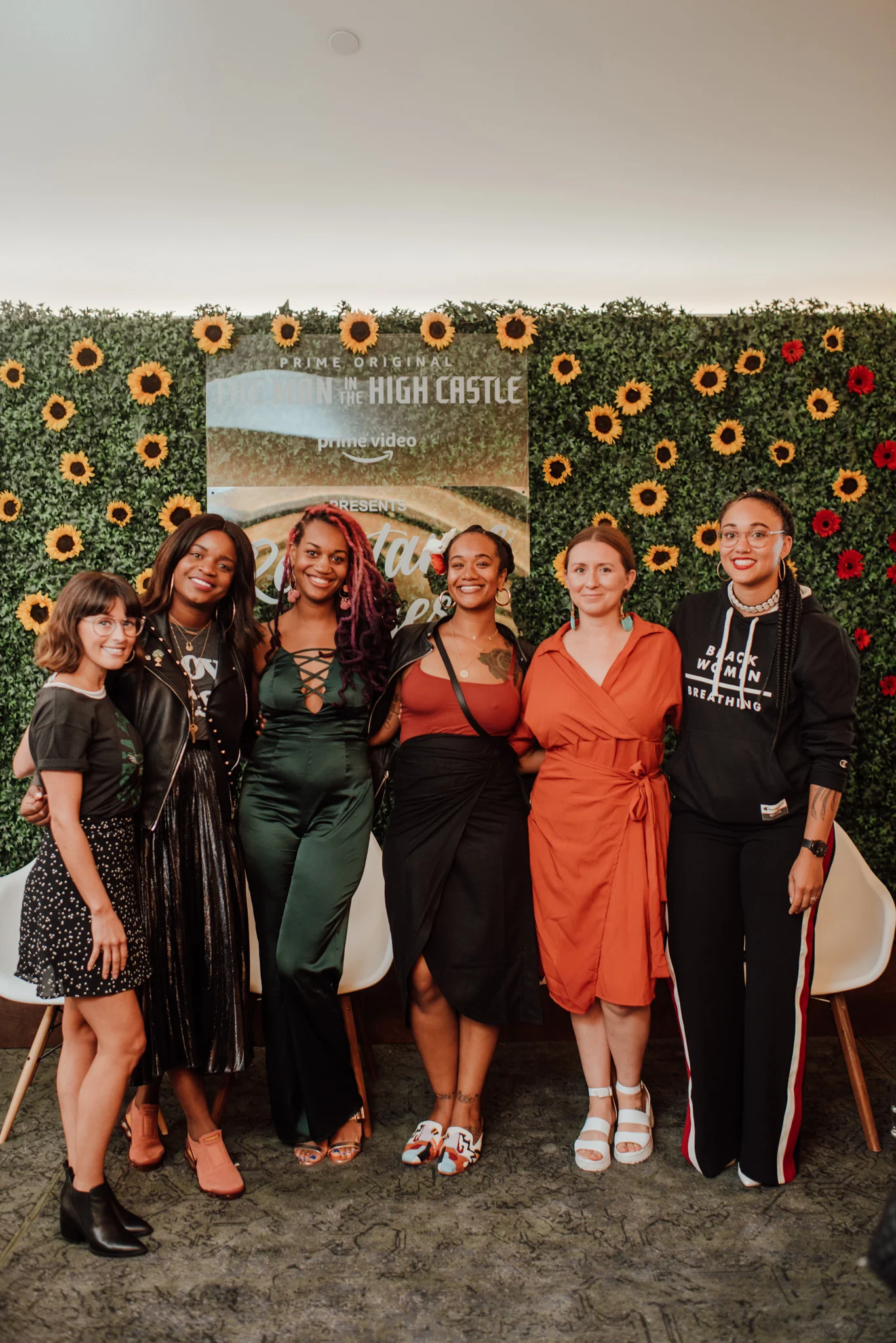



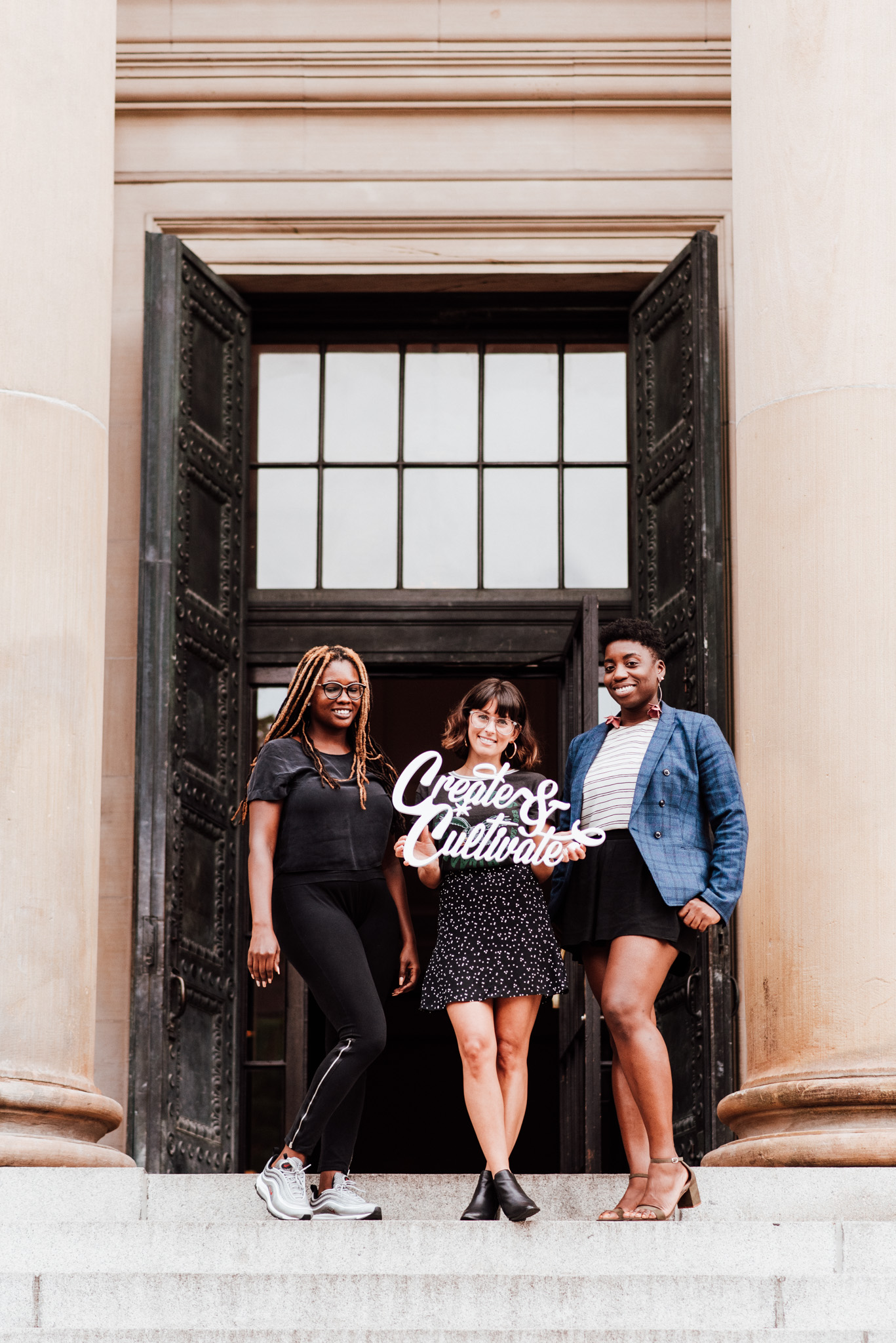




Join the Resistance
We’re encouraging our readers to get out and vote in the November elections, as registration in many cities will be closing soon. To find out the deadline for your state, click here. And yes, you can register to vote online and the process takes an average of two minutes or less to complete. Head to the polls, and most importantly, resist.
While we wait for November, be sure to catch Season 3 of The Man in the High Castle only on Amazon Prime Video starting today and use the hashtag #ResistanceRises to join in on the conversation online!
MORE FROM OUR BLOG
Poppin' By: The East L.A. Studio of Hija de tu Madre by Patty Delgado
The Hija de tu Madre founder is such a boss.
Every month this year we're profiling a female entrepreneur, popping by their workspace and enjoying a bit of bubbly. "Poppin' By" is a Create & Cultivate profile series in Partnership with Chandon. Here's a cheers to amazing, working women!
When we log onto Instagram, we’re bound to see an influx of different brands and shops that made their mark on the social media platform. Every now and then we come across one that sticks out, and has a message that’s so much more than just an item of clothing. In this case, one social-first brand we haven’t taken our eyes off of is Hija de tu Madre. The colorful Instagram feed has a much bigger story and message, and it’s one of the few Latinx-inspired marketplaces out there for the millennial audience.
Do a quick search of the #VirgencitaJacket hashtag on Instagram and you’ll come across a sea of women sporting the bedazzled version of The Virgin of Guadalupe left and right. As a first-generation Latina, Patty strived to highlight the beautiful culture of the Latinx people through history, symbolism, and vibrant designs that get people talking. You’ll find jackets, jewelry pieces, cell phone cases, and so much more, with a few messages directed towards today’s current politics, Latinx sayings, and downright art.
Patty was kind of enough to allow us to step into her Boyle Heights showroom, as the business has grown from its online presence. We chatted about her story, how she got started, and how Hija de tu Madre is changing the world of Latinx fashion. Cheers!
Can you share the backstory on how Hija Tu Madre came about?
Back in 2016 I made a #VirgencitaJacket for myself, and I instantly fell in love with it. A light bulb went off in my head, I knew that if this jacket meant so much to my personal cultural core, other Latinas might feel the same. Fast forward a few months later, I launched Hija de tu Madre with just $500, 30 Virgencita Jackets and a mission to celebrate Latina identity in fashion.
What inspired the movement of your sequin embroidered jackets?
The Virgencita Jacket started it all, and then we started doing other designs like Frida Kahlo, our Sacred Corazon, LATAM flags, Loteria inspired designs, and kids jackets. Our jackets are loud shiny statements of identity, and are what make our brand really special.
What’s the favorite part of your workspace?
Pink errythang! I like to feel inspired and surrounded by cultural inspiration, and my headquarters does just that.
What has been the most surprising element of entrepreneurship for you?
I’m constantly blown away by how supportive other women have been of my journey, and how many new friends I’ve made because of Hija de tu Madre.
What are some of the biggest rewards you’ve experienced being a Latinx business owner?
The biggest reward has been being able to connect with a wide audience of Latinas who just get me. I love being able to share my vision with my followers and customers every single day, the community that we’ve built so far is the best part of my job.
Where do you find your inspiration?
I find inspiration in my childhood, upbringing, culture, family, and Mexican / Xicana identity.
Is there anyone you wish you would’ve hired earlier on for your business?
I think I’ve been growing my business at the right pace, and hiring the right people at the right time. So, I don’t think I would’ve hired anyone in the earlier stage because it wouldn’t have been the right time.
If you could tell your 20-year-old self anything, what would it be?
Your life is about to pop off real quick, I promise. Also, care more about your credit score.
If there’s one piece of advice you could give all female entrepreneurs what would it be?
Take the risk, and invest in your happiness.
Who are your biggest female influences?
All the women in my family, because they’ve always been hustlers. They’re my biggest supporters.
What do you hope is next for your business?
I’d like to grow our business to include more product categories like home and office goods. In addition to growing our collections, we want to keep creating pieces and content the celebrate Latinas. Making sure our customers feel empowered and seen is our number one priority.
MORE FROM OUR BLOG
Classifieds: Dear Media, Stand Up to Cancer, Eloquence & More!
Resume, check. Cover letter, check.
Happy October! Welcome to our first round of classifieds for the month. Still in search of a new gig? Don’t worry, we’ve got you covered. From roles in the talent and retail worlds to event planning, we’ve got it all. If any of these sound like your dream job, tailor your resume and get to applying.
Good luck!
Alice & Wonder - Chi, IL
Alice’s Table - Multi-city
Eloquence - LA, CA
Dear Media - LA, CA
How Women in Charge Unwind and Get Out of the Office
Sip and disconnect.
We’ve all been there. After a long couple of weeks or months at work, we get the itch to unwind and get some time out of the office. For those work-from-homers, the need to step away from computers and working area is just as real too. As many of us know, being a boss means that you are always ready to go and plugged in, and many entrepreneurs sacrifice perks like vacations and weekends, and even late nights to put in the work needed to run a successful business.
We treated a group of fierce female founders to our first ever Out of Office Retreat, in partnership with Chandon. From fashion and jewelry designer, to winemakers, bloggers, and more, everyone who joined deserved a much-needed break. So, what did we do? We headed to the Domaine Chandon winery in Napa, California, sipped on bubbly, hopped on a hot air balloon, heard from inspiring women, and so much more. Keep on reading for some takeaways from the well-deserved time off.
First up, a balloon ride. The theme of the retreat was overcoming fears and taking flight, so what better activity? If there is one thing that holds so many of us back each day from growing as individuals, achieving high levels of success and becoming the best version of themselves, fear is definitely at the top of the list. High achievers, regardless of occupation, understand that taking risks and massive action is a vital part in getting from where you are to where you want to go. And that goes for in life, and in business.
Many of our guests faced their fear of heights and others simply crossed off this bucket list item. We took a ride across the lovely town of Napa, and got to bond, snap some pics, and of course enjoy more bubbly.
Next, the group toured the Domaine Chandon winery, where Pauline Lhote is a lead winemaker. It’s important to note that she’s one of the few women in charge across the winemaking industry, and has worked her way up the ladder with Chandon for many years.
After a relaxing lunch outside, our getaway attendees sat through an inspiring conversation with Rebecca Minkoff, Baublebar’s Daniella Yacobovsky, and Pauline Lhote. We also invited our Create & Cultivate scholarship winners along for the ride, Afenya Montgomery of the ICANCollective, and Samantha Santana of Samantha Santana designs. Ahead, some key points from the conversation.
#OOORetreat Convo Takeaways
“I think it’s more important to be authentic versus being on all the time.”- Rebecca Minkoff
“Surround yourself by really incredible people and count on them to bring that brand on vision to life.”-Daniella Yacobovsky
“You’re going to fail, you’re going to learn, you’re going to grow.”-Rebecca Minkoff
“Every woman is a superwoman.” -Rebecca Minkoff
“That’s the great thing about my job is that there is no typical day.” -Pauline Lhote
“Whenever I feel afraid, I tap into the part of me that’s most confident.”-Rebecca Minkoff
“You’re going to fail, you’re going to learn, you’re going to grow.”-Rebecca Minkoff
The retreat was special for so many reasons but we’ll admit that our favorite part was that we spent our days discussing issues that matter to us, plus what we can all do about them. We shared resources from website designers to PR and communications, and discussed the parts of a business that really move the needle. While our days were packed with activities, the brainstorming and collaboration was completely reenergizing, and we all left with new goals and new ladies to call our friends.
Check out all of the photos from the #OOORetreat weekend in our full album here.
How do you make sure to take time away from the office to unwind? Let us know in the comments below!
MORE FROM OUR BLOG
The Science Behind Intention-Setting, Plus 6 Ways How it Can Elevate Your Business Goals
We’re all in this together.
As an entrepreneur, it is essential to set goals to achieve the results you desire. However, women often put so much pressure on themselves for achieving a certain milestone or metric in the form of a goal that goals can sometimes be counterproductive. Let me explain.
Goals can inadvertently make us feel like a failure. We either hit the $10k month or we didn't. Traditional goal-setting often plays into the black/white mentality that is so pervasive in our society. These types of goals don't leave a lot of room for all the beautiful colors in between where we may not have hit the exact goal we wanted but we succeeded in other ways. For example, maybe you didn't hit your goal of $10k this month but you set up 20 meetings with prospects that could lead to $30k next month. Getting down on yourself for not hitting your original goal of $10k could rob you of celebrating the 20 prospect meetings you worked hard to achieve that may even result in more revenue in the long run.
Intentions, on the other hand, are less shame-based and offer more opportunity to feel a sense of accomplishment. Or as I like to say, they leave more room for magic. Those little surprises that help us generate income or increase our influence in ways we didn't expect. For example, you might have the goal "book 5 clients this month" when in reality what you desire is to make money in a way that feels energizing and aligned. Maybe booking 5 clients will feel energizing and aligned but maybe there's a speaking opportunity for the same amount of money that would feel even more energizing and aligned. You don't want to be so focused on booking your 5 clients that you 1) book clients who aren't aligned and suck the life out of you or 2) miss that amazing speaking opportunity. It's a practice of detaching from the outcome and believing in the infinite possibilities that are available to us at any given time.
Intentions not only offer a more compassionate way to set goals but there have been studies that look at psi (a general way to describe types of communication or information transfer that defy common understanding of time and space), which suggest that conscious intention (e.g. thoughts and feelings) influences unconscious activity. In fact, our eyes receive and process 10 million bits of information per second but we only consciously engage with 16 of them. This means we are only aware of a fraction of the information that is at our fingertips. Part of our work is to learn how to expand our awareness through practices like meditation. The other part is to simply believe there is more than meets the eye.
Here are 6 ways to use intention-setting to elevate your business goals:
1. Create a vision board for your business - vision boards are all the rage these days and there's a reason why. Have you ever considered creating a vision board specifically for your business? It can be a fun way to uncover what you desire your business to look and feel like and where you want to focus your attention. Especially if you find yourself too much in your head, spending time to reconnect with your bigger mission through imagery can be incredibly rewarding. Let your imagination run wild.
2. Schedule a monthly intention-setting party - it can be fun to get together with your fellow lady bosses once a month and share your intentions with each other. You can ask each other questions like: Where do you desire to focus your energy? What was your biggest learning from the previous month? What do you hope to celebrate at the end of this month?
3. Outline your ideal day as CEO - as an entrepreneur, it is important to be clear on what your ideal day as CEO would look and feel like. Otherwise, we can get side-tracked from our bigger vision of life and business by spending our days responding to low-priority emails, scheduling meetings over meal times, and slipping back into old workaholic routines. Setting your own schedule is one of the greatest perks of being an entrepreneur so take time to make this happen. Ask yourself: How many hours do I want to work every day? What would my dream mornings look like? How often do I want to work out each week? When am I most productive? How important is it to practice daily self-care?
4. Choose a word of the week - intention-setting doesn't have to be overwhelming. It can be as simple as choosing a word of the week like "confidence", "focus", "trust", "joy", "visibility", or "play." This is a great way to stay committed to an intention without having to do anything too elaborate. Try writing your word in your journal, putting it on a sticky note on your computer, or creating a calendar reminder so you see it daily.
5. Claim your superpower - in the midst of trying to achieve goals, it is easy to focus on where you are falling short and forget how amazing you are. Take some time to remind yourself what you are truly gifted at. What is your superpower? Is it navigating difficult conversations? Is it getting people to view something differently? Is it your strong intuition? Is it your coding skills? In the fast pace of entrepreneur life, don't forget to celebrate all the ways that you are shining.
6. Visualize yourself in 5 years - taking a step back to imagine where you would like to be in 5 years can be a powerful exercise. This isn't about knowing all the answers but tapping into the essence of your big dreams. We can get so caught up in the day-to-day activities of running a business that we lose sight of where we want to go. Take a moment to close your eyes and picture yourself 5 years from this moment. Where are you? What are you doing? What is the impact you are making? Who is around you? How do you feel? What wisdom does your future self want your younger self to know?
To all of my fellow hustlers out there, don't let your business goals be a cause of stress or shame. Weave some intention-setting into your business strategy because it's not only a fun way to stay focused but science is telling us there is real power putting words to positive changes we wish to make in our life.
By: Elizabeth Su
Elizabeth Su is a life coach and mindfulness expert who mentors high-achieving women around the world to unlock their potential, lean into joy, and live life to the fullest. I am currently pursuing my Masters in Clinical Psychology (concentration in Spirituality Mind Body) and an advanced certificate in Sexuality, Women, and Gender from Columbia University. I have been featured in numerous media outlets including OZY, Fatherly, Bustle, PopSugar, Elite Daily, and Thought Catalog for my work around marriage mindfulness, female empowerment, and navigating your own path to happiness.
MORE FROM OUR BLOG
These MBA Programs Prove It’s Never Too Late to Start Fresh
Grad student 101.
As we all get further in our careers, many of us have the same thought: Should we go back to school? To be back in school sounds like a dream come true, but unfortunately it’s not one that becomes a reality for all of us.
Whether it’s for career advancement purposes, or switching career paths, getting a second degree can be beneficial for more reasons than one.
This has become clearer as the gender gap continues to narrow between men and women with advanced degrees. Women with advanced degrees are skyrocketing and will soon surpass men. We are graduating in higher numbers and we're the majority of the workforce, so of course, we should see the same patterns in secondary degrees. Among adults 25 years old or older in the US, approximately 10.2 million women have advanced degrees compared to 10.6 million men. The gap is narrowing since more and more women have thankfully found the resources to continue their education.
Let's look at some of the baddest ladies in the game. The #SELFMADE women that are running fortune 500 companies and more!
Youtube’s CEO Susan Wojcicki earned her MBA from UCLA
Facebook’s Sheryl Sandberg and Mary Erdoes, the most powerful woman in finance and CEO of J.P. Morgan Asset Management, both have MBAs from Harvard
Melinda Gates, Co-Chair at The Bill & Melinda Gates Foundation has an MBA from Duke.
These are just a few of the boss women who have continued their education and kill it in the workforce.
Listen, in the past, there were a lot of hurdles that stood in the way of earning an advanced degree but it's really becoming more flexible and easier for women and men of all backgrounds to make earning an MBA work around their schedules.
Three different MBA programs at Strayer University can help you break out of a career rut, grow a business, or learn to lead. Check them out:
The Strayer University MBA
This program is designed for us working adults. It can be completed entirely online, meaning that those who don’t have time to go into a classroom can still get the experience. Also, Strayer takes into account previous education and work experience, which can mean a shorter timeframe for getting it done. Plus, there’s a variety of different programs for different interests, so if you’re looking to switch gears and explore new areas, you can. These include Accounting, IT programs, and Health Services Administration just to name a few.
The Digital Entrepreneurship MBA
In today’s content-driven and virtual world, it feels like we need to be online all the time. No matter your industry, yes finance and education included, it’s time to get your mind digitally-friendly and with the times. Strayer’s Digital Entrepreneurship MBA combines media insights with business skills that can help get students ahead of the curve.
Through live-streaming, optimized courses for mobile devices and tablets, and lessons from execs from companies like Amazon, getting your mind in the game is so much easier.
You can explore courses in digital business operations, technology, business social media, business law, and a lot more.
The Jack Welch Management Institute MBA
Ranked as a Top 25 Online MBA Program by Princeton Review, the Jack Welch Management Institute redefines the MBA experience with an entirely online yet interactive curriculum for students.
Powerful lectures, insightful reading, video messages and experiential exercises are delivered by top executives like Jack Welch, Warren Buffett and C-suite leaders from Starbucks, McDonald’s, Netflix and more.
This post is brought to you in paid partnership with Strayer University.
MORE FROM OUR BLOG
We Asked Entrepreneurs Their Best West Coast Vacation Reccomendations to Unplug
We took a pit stop from our WorkParty tour to continue enjoying San Francisco. WorkParty and Alaska Airlines threw a dinner party for some of our favorite Bay Area entrepreneurs at The Progress in SF. The Hawaii-themed soiree was everyone’s Instagram dream, and gave guests the perfect island vibes for unwinding and enjoying a night out in the city. As we all know, entrepreneurs are some of the hardest working people in the game, and there’s not always room to unwind and unplug. So, we had to ask the ladies in attendance what their favorite West Coast spot is to get out of the office and unplug.
“If you come to California, you have to go to Big Sur. You get the best of everything, including the ocean, mountains, hikes, rustic feels.”
“You need to go to Seattle in September or October. The light becomes golden and beautiful, and it’s the most beautiful time, it’s not too cold, and it doesn’t rain.”
“You can’t go to LA, without going to Venice Beach. You’ve got to hit up the boardwalk, and not only for sightseeing.”
“Ojai is so charming and beautiful.”
“If you need relaxation, you need to go to Palm Springs.”
“LA all day!”
“Go glamping in Mendocino. There’s no signal out there so you’re forced to unplug.”
Alaska Air was also kind enough to provide guests with roundtrip travel vouchers for anywhere they’d like to go. As if they already didn't get to feel like they were on vacation for one night, they’re now able to enjoy the real deal.
Have you already snagged a copy of WorkParty the book? If not, what are you waiting for? Purchase the book here.





















